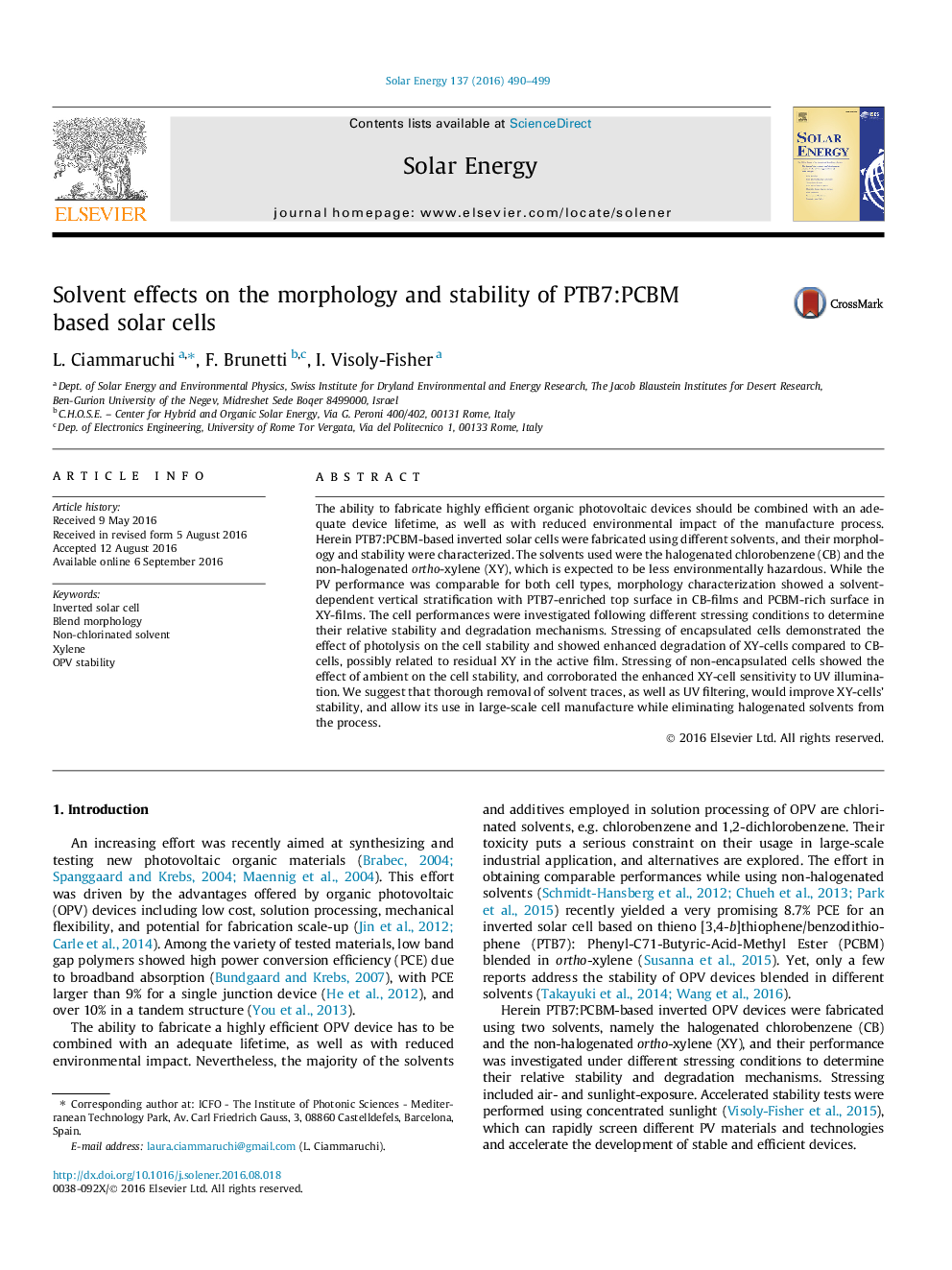| Article ID | Journal | Published Year | Pages | File Type |
|---|---|---|---|---|
| 7936319 | Solar Energy | 2016 | 10 Pages |
Abstract
The ability to fabricate highly efficient organic photovoltaic devices should be combined with an adequate device lifetime, as well as with reduced environmental impact of the manufacture process. Herein PTB7:PCBM-based inverted solar cells were fabricated using different solvents, and their morphology and stability were characterized. The solvents used were the halogenated chlorobenzene (CB) and the non-halogenated ortho-xylene (XY), which is expected to be less environmentally hazardous. While the PV performance was comparable for both cell types, morphology characterization showed a solvent-dependent vertical stratification with PTB7-enriched top surface in CB-films and PCBM-rich surface in XY-films. The cell performances were investigated following different stressing conditions to determine their relative stability and degradation mechanisms. Stressing of encapsulated cells demonstrated the effect of photolysis on the cell stability and showed enhanced degradation of XY-cells compared to CB-cells, possibly related to residual XY in the active film. Stressing of non-encapsulated cells showed the effect of ambient on the cell stability, and corroborated the enhanced XY-cell sensitivity to UV illumination. We suggest that thorough removal of solvent traces, as well as UV filtering, would improve XY-cells' stability, and allow its use in large-scale cell manufacture while eliminating halogenated solvents from the process.
Related Topics
Physical Sciences and Engineering
Energy
Renewable Energy, Sustainability and the Environment
Authors
L. Ciammaruchi, F. Brunetti, I. Visoly-Fisher,
